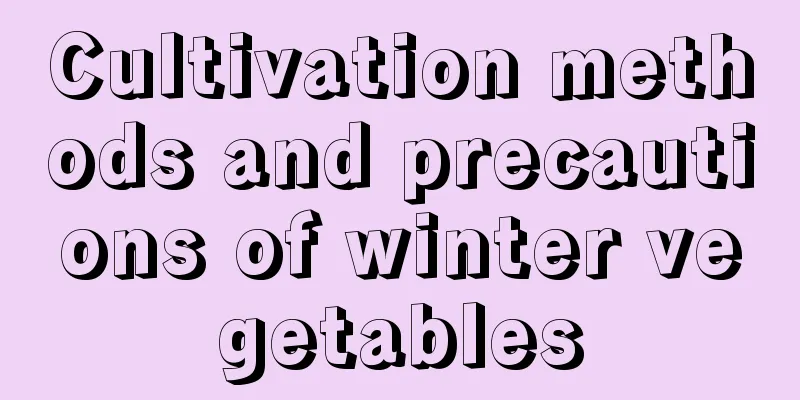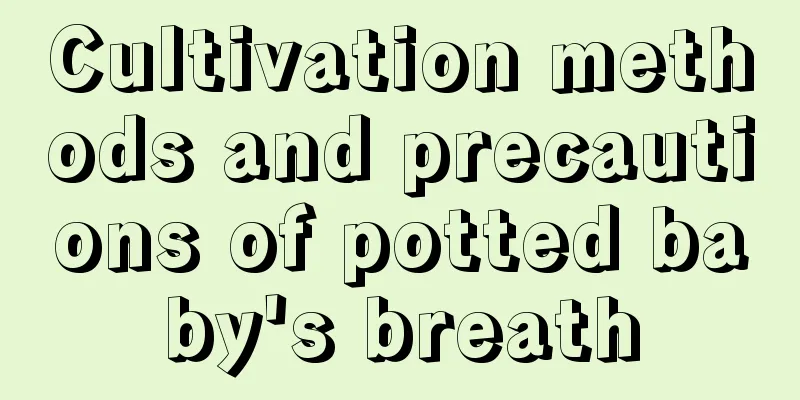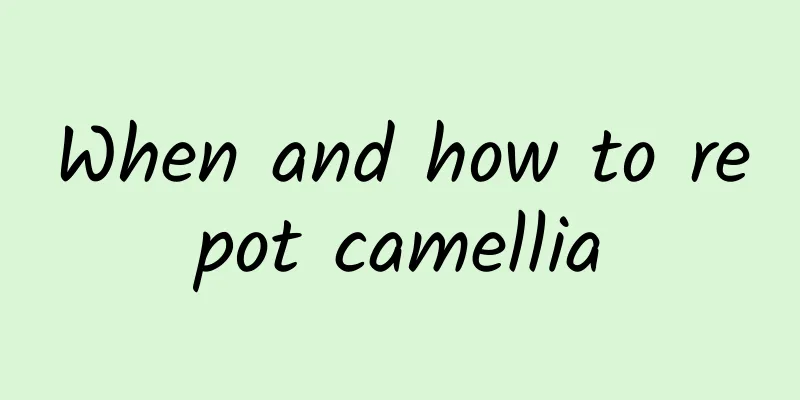Cultivation methods and precautions of winter vegetables

1. Maintenance methods1. Temperature: The germination temperature is around 25 degrees, and the growth temperature is around 20 degrees. If the temperature exceeds 30 degrees, it is prone to disease. If the temperature is below fifteen degrees, its growth rate will slow down. 2. Watering: It is suitable for growing in a relatively humid environment. Because it is not resistant to high temperatures, it needs more watering in hot weather, preferably every other day. When the temperature is lower, watering once a week is enough. 3. Fertilization: It consumes a lot of nutrients, especially during the growth period. Top dressing is needed every month. You can use farmyard manure or compound fertilizers with more comprehensive nutrients. When the seedlings first emerge, topdressing should still be mainly nitrogen fertilizer, in order to promote plant growth. 4. Light: It is not resistant to exposure to the sun, so diffuse light should be used as the main source of light, and the daily exposure time should be guaranteed to be four to five hours. 2. Breeding techniques1. Reproduction: It can be propagated by sowing. The amount of seeds used per mu is about one kilogram, and the sowing method is mainly broadcasting. If it is hole sowing, four to five seeds can be placed in each hole. After sowing, cover with a layer of soil and water thoroughly once. Seedlings will emerge in one to two weeks. When the seedlings grow three leaves, they can be transplanted and planted. 2. Planting: The density of planting should be determined according to the requirements of harvesting. The planting density will be different if the requirements of harvesting are different. If the purpose is to harvest seedlings, you can plant them appropriately densely. Generally, 15 cm square is the best. If you are harvesting tender shoots multiple times, 25 cm square will be enough. 3. Problem Diagnosis1. Pests: The main pests of winter vegetables are cutworms and fall armyworms. If the plants are found to be infected with pests, you can use poison bait to kill them. If you use chemical agents to kill the pests, you have to wait a week to ten days before picking them. Because chemical agents are toxic, you have to wait until the drug properties have evaporated before picking them. 2. Pathology: Its main diseases are anthracnose and root rot. Anthracnose needs to be controlled with thiophanate-methyl, and root rot needs to be controlled with carbendazim. IV. Other issues1. Edibility: It is edible. 2. Is it suitable for home cultivation: It does not require a high maintenance environment, and the plant is not large, so it can be grown indoors. |
<<: Cultivation methods and precautions of Yunnan purple grass
>>: Cultivation methods and precautions of rich grass
Recommend
How to grow potted roses and what to pay attention to
Growth habits of potted roses Potted roses prefer...
The benefits of placing bamboo cypress indoors (Is it good for human health to keep bamboo cypress at home)
What are the benefits of growing bamboo cypress p...
How to prune goldenrod
How to prune goldenrod Generally, you can do a pr...
Apricot cultivation method
Apricot cultivation method soil Ailanthus is more...
How to propagate purple magnolia
Propagation of Magnolia liliiflora by seeding Pur...
Cultivation methods and precautions of pink muhly grass
1. Maintenance methods 1. Temperature: It likes w...
Throw some small things in the pot, and the flowers and plants will no longer attract insects
plant ash How to use: 1. Prepare wood ash (wood a...
Is geranium easy to grow? How to grow geranium so that it blooms the most?
Geranium likes a warm, humid and sunny environmen...
Cultivation methods and precautions of Dieffenbachia
1. Lighting Dieffenbachia is an evergreen herb of...
When is the lilac flowering season?
1. Flowering period There are many varieties of l...
How to breed Medusa succulent wizard and what to pay attention to
Medusa succulent mage breeding method Medusa succ...
How long does the goldfish spider plant last and how many times does it bloom in a year?
1. Flowering time The flowering period of the gol...
The effects and functions of monk fruit, the effects of monk fruit flower
1. The efficacy of monk fruit 1. Improve immunity...
How to water the Christmas cactus during its flowering period
1. Watering frequency During the flowering period...
When and how to transplant the iron tree? How to transplant it so that it can survive easily
It is best to transplant the iron tree in spring ...









